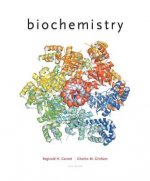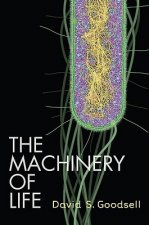
Kód: 04611031
Universes in Delicate Balance: Chemokines and the Nervous System
Autor R. M. Ransohoff, K. Suzuki, A. E. I. Proudfoot
It is commonly acknowledged that the nervous system and the immune system, those most complex of networks, share attributes beyond their intricacy. Elements common to the two systems include memory, connectivity, flexibility and d ... celý popis
- Jazyk:
 Angličtina
Angličtina - Vazba: Pevná
- Počet stran: 404
Nakladatelství: Elsevier Science & Technology, 2002
- Více informací o knize

8009 Kč
Dostupnost:
50 % šance Máme informaci, že by titul mohl být dostupný. Na základě vaší objednávky se ho pokusíme do 6 týdnů zajistit.
Máme informaci, že by titul mohl být dostupný. Na základě vaší objednávky se ho pokusíme do 6 týdnů zajistit.Prohledáme celý svět
Mohlo by se vám také líbit
Darujte tuto knihu ještě dnes
- Objednejte knihu a zvolte Zaslat jako dárek.
- Obratem obdržíte darovací poukaz na knihu, který můžete ihned předat obdarovanému.
- Knihu zašleme na adresu obdarovaného, o nic se nestaráte.
Informovat o naskladnění knihy
Zadejte do formuláře e-mailovou adresu a jakmile knihu naskladníme, zašleme vám o tom zprávu. Pohlídáme vše za vás.
Více informací o knize Universes in Delicate Balance: Chemokines and the Nervous System
Nákupem získáte 801 bodů
 Anotace knihy
Anotace knihy
It is commonly acknowledged that the nervous system and the immune system, those most complex of networks, share attributes beyond their intricacy. Elements common to the two systems include memory, connectivity, flexibility and developmental selection of cellular composition by a rigorous process involving widespread programmed cell death. There is one salient difference: the cells of the immune system are predominantly in constant motion, while post-mitotic neurons and glia are largely fixed in place. Therefore, chemokines, initially characterized as leukocyte chemoattractants, have for the last one and one-half decades been intensely and productively studied in the contexts of inflammation, immunity and hematopoietic development. Only recently have the two fields, neurobiology and immunology, displayed mutual interests in chemokines. This convergence of the two tribes of investigators was catalyzed by the finding that SDF-1 (now known as CXCL12) and its receptor, CXCR4, exerted significant and similar functions in development of both nervous and immune systems. Indeed CXCL12 and CXCR4 were required, in an uncannily similar fashion, for retention of pre-B lymphocytes at sites of maturation in the bone marrow and of neuronal progenitors in the external granule cell layer of the developing cerebellum. Recent reports indicate that chemoattraction of cerebellar granule cells through CXCR4 can be suppressed by reverse signaling initiated by binding of soluble eph receptors to transmembrane ephrin B, thereby establishing a link between chemokine action and a cardinal patterning system of the developing nervous system. As may be anticipated when a dam breaks, a massive influx of correlative observations in the nervous and immune systems is likely to ensue. This volume represents the state of current knowledge. To this end, introductory material for both systems is provided. Basic and advanced 'chemokinology' are presented. The recipe for making a nervous system (both ingredients and instructions for preparation) is described, as are the roles of chemokines and their receptors in making an immune system. Given their importance and complexity, CXCL12/CXCR4 interactions are separately treated in varying contexts. The field of 'neurobiology of chemokines' has not lain fallow during the last ten years. During much of this time the principal focus has been on neuroinflammation. Linking the immune and nervous systems are explanations of the functions of chemokines and their receptors for resident brain macrophages, the microglia, the unique cerebrovascular endothelium and angiogenesis. Understanding human disease is the goal of much of this research. New discoveries are being made and reported at a gratifying rate. It is expected that this volume will promote the steady production and application of useful new knowledge in this developing field. It provides a unique single-source database for basic neurobiology highlighting the fundamental aspects of chemokines and discussing the relations of chemokine science to animal models and human disease.
 Parametry knihy
Parametry knihy
Zařazení knihy Knihy v angličtině Mathematics & science Biology, life sciences Biochemistry
8009 Kč
- Plný název: Universes in Delicate Balance: Chemokines and the Nervous System
- Autor: R. M. Ransohoff, K. Suzuki, A. E. I. Proudfoot
- Jazyk:
 Angličtina
Angličtina - Vazba: Pevná
- Počet stran: 404
- EAN: 9780444510020
- ISBN: 0444510028
- ID: 04611031
- Nakladatelství: Elsevier Science & Technology
- Hmotnost: 1120 g
- Rozměry: 279 × 210 mm
- Datum vydání: 29. April 2002
Oblíbené z jiného soudku
-

Wilson and Walker's Principles and Techniques of Biochemistry and Molecular Biology
1431 Kč -

Schaum's Outline of Biochemistry, Third Edition
772 Kč -

DHEA Breakthrough
196 Kč -

Biochemistry, Fourth Edition International Adaptation
1901 Kč -

Biochemistry and Molecular Biology
1832 Kč -

Biochemistry and Molecular Biology of Plants 2e
3213 Kč -

Ice Cream
2643 Kč -

Advanced Molecular Genetics
4244 Kč -

Biochemistry
1401 Kč -

Structure And Mechanism In Protein Science: A Guide To Enzyme Catalysis And Protein Folding
2143 Kč -

Voet's Principles of Biochemistry, 5th Edition Glo bal Edition
1902 Kč -

Exercise Biochemistry
3313 Kč -

Introduction to Bioinformatics
1608 Kč -

Female Brain
347 Kč -

Biochemistry
2716 Kč -

Machinery of Life
782 Kč -

BIOS Instant Notes in Biochemistry
917 Kč -

Biochemistry
10505 Kč -

Protein Structure and Function
2073 Kč -

Medical Biochemistry Principles for Medical Students
608 Kč -

Cell: A Very Short Introduction
249 Kč -

Introduction to Protein Structure
2691 Kč -

Biochemistry: A Very Short Introduction
249 Kč -

Sensory Evaluation of Food
2383 Kč -

Pulp and Paper Industry
5306 Kč -

Medical Biochemistry
3968 Kč -

Marks' Essentials of Medical Biochemistry
3092 Kč -

Essentials of Glycobiology, Third Edition
5109 Kč -

Chemistry and Biochemistry of the Amino Acids
2987 Kč -

Introduction to Proteins
2969 Kč -

Exploring Proteins
1732 Kč -

Biochemistry of Lipids, Lipoproteins and Membranes
2821 Kč -

Case Files Biochemistry 3/E
1254 Kč -

Introduction to Protein Science
1925 Kč -

Photosynthesis And Bioenergetics
4121 Kč -

Bioavailability, Leachability, Chemical Speciation, and Bioremediation of Heavy Metals in the Process of Composting
3880 Kč -

Bioenergetics
2202 Kč -

Protein Engineering Techniques
1681 Kč -

Proteomics Protocols Handbook
9783 Kč -

Introduction to Bioorganic Chemistry and Chemical Biology
2691 Kč -

Chemistry of Life
356 Kč -

Growth Hormone Secretagogues in Clinical Practice
11112 Kč -

Textbook of Biochemistry with Clinical Correlations
8348 Kč -

Plant Biochemistry
3395 Kč -

Environmental Soil Biology
3313 Kč -

Polar Lipids
3258 Kč -

GHRH, GH, and IGF-I
6578 Kč -

Physico-chemical Properties of Jackfruit
1475 Kč -

Cell Signalling
5783 Kč
Osobní odběr Praha, Brno a 12903 dalších
Copyright ©2008-24 nejlevnejsi-knihy.cz Všechna práva vyhrazenaSoukromíCookies








 Vrácení do měsíce
Vrácení do měsíce 571 999 099 (8-15.30h)
571 999 099 (8-15.30h)